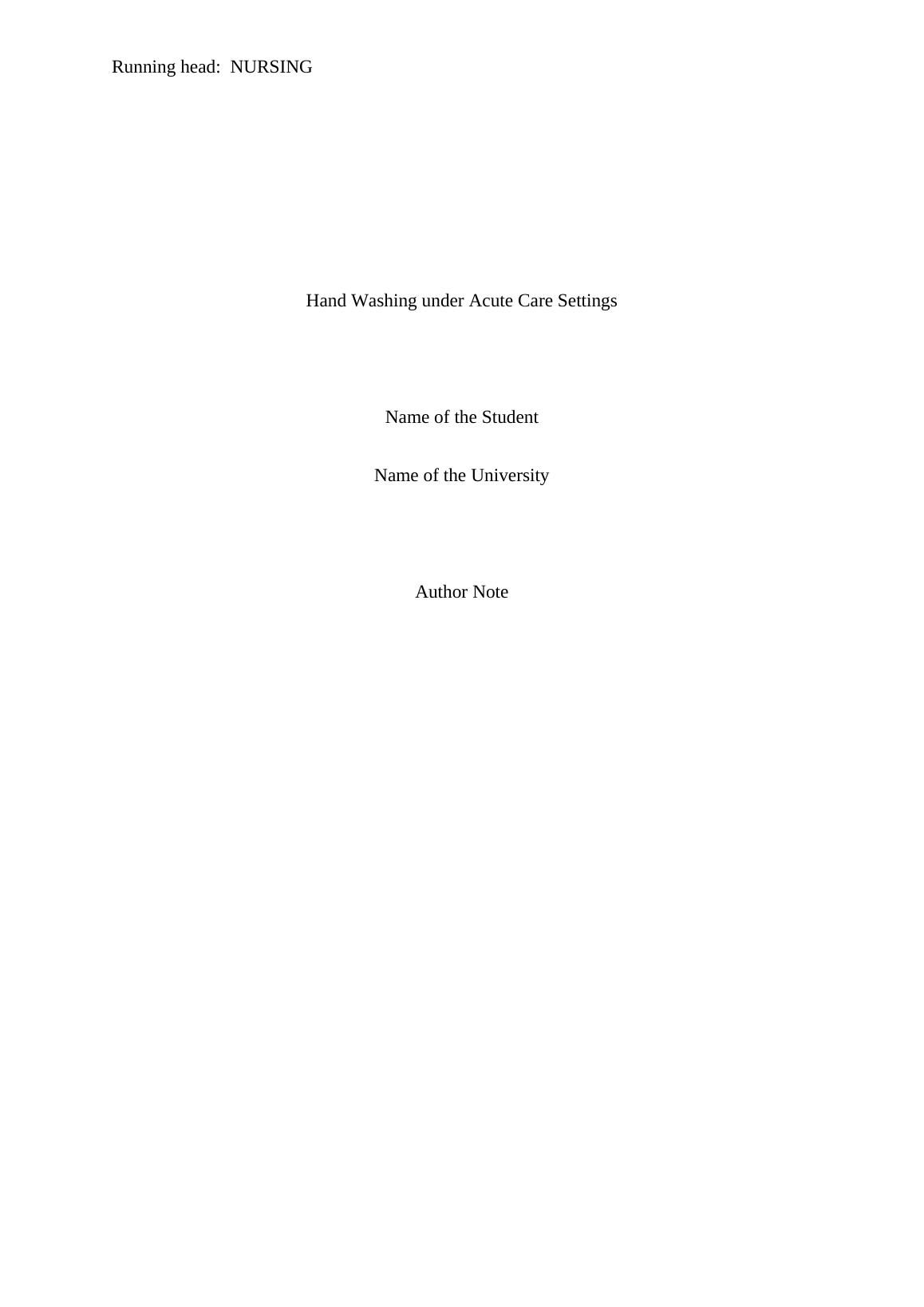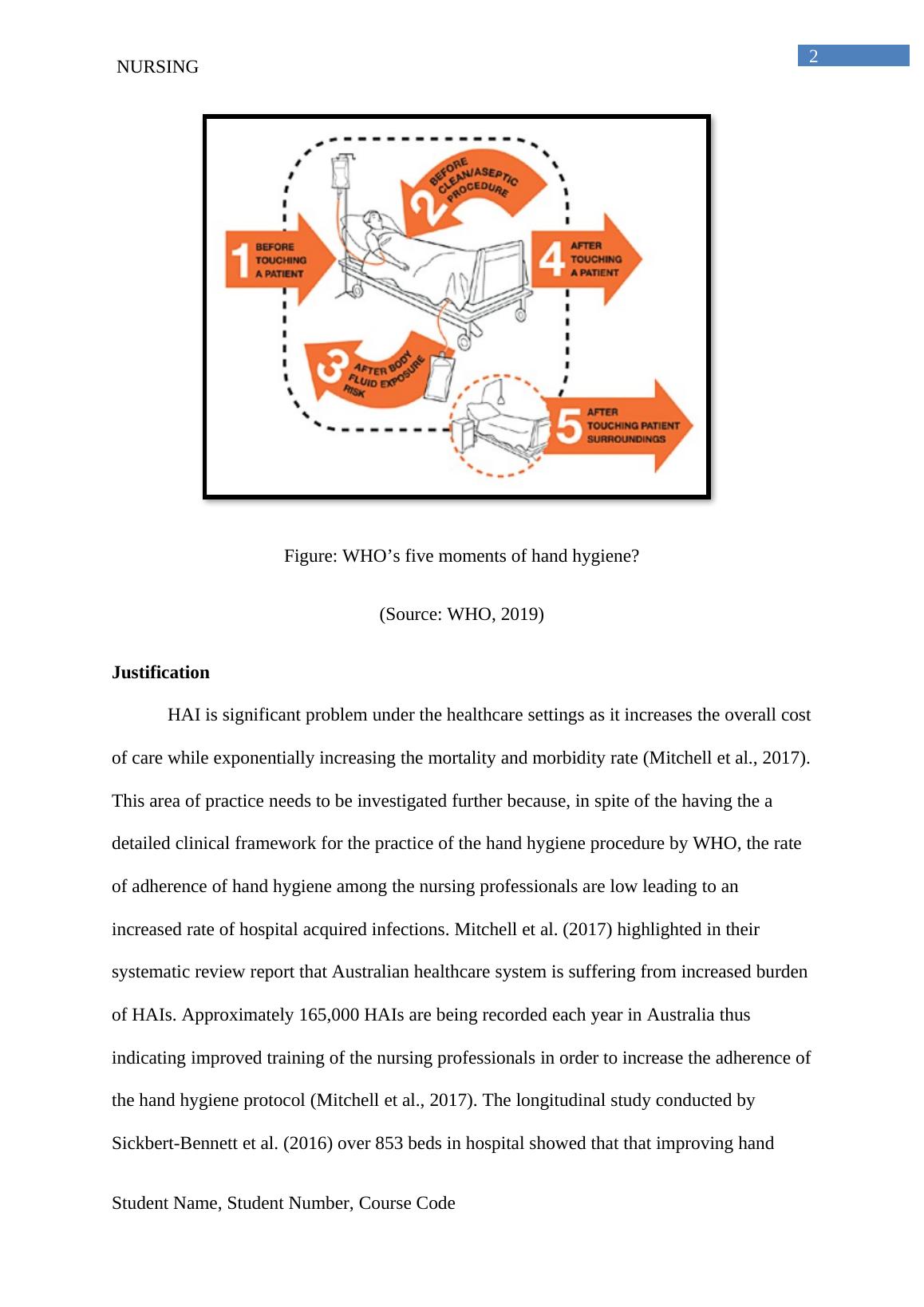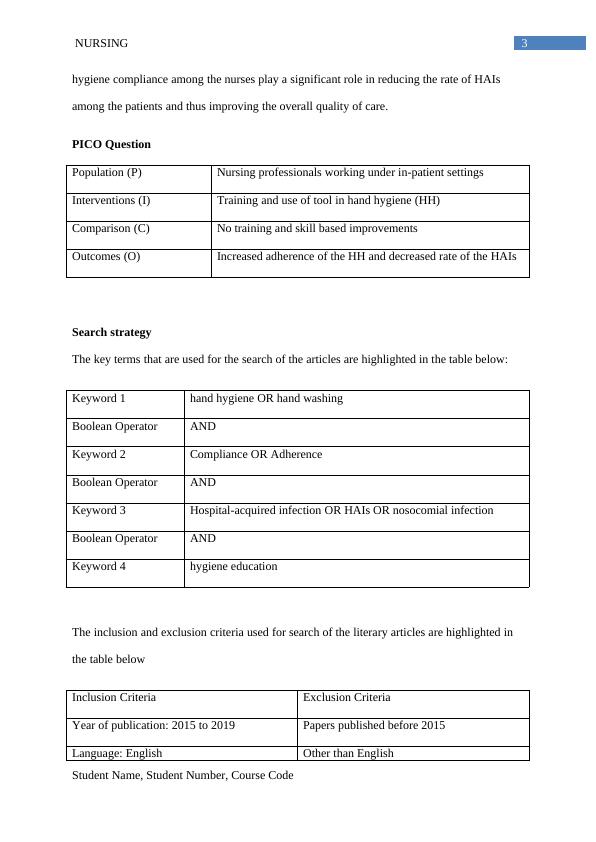Hand Washing under Acute Care Settings | Report
Added on 2022-08-31
13 Pages2986 Words17 Views
End of preview
Want to access all the pages? Upload your documents or become a member.
Efficacy of Alcohol-gel as a Substitute for Soap and Water Hand in a Clinical Setting
|11
|2884
|214
Hand hygiene and healthcare-associated infections: A critical analysis of literature
|13
|2629
|471
A critical analysis of knowledge gaps in hand hygiene among nursing professionals
|10
|2611
|471
HEALTH CARE 8 HEALTH CARE Health care Name of the student: Nosocomial Infeasibility in Health Care
|11
|3105
|273
Article Analysis and Evaluation of Research Ethics
|5
|1378
|135
Impact of Hand Hygiene on Infection Rate in Hospitals
|16
|3918
|161




